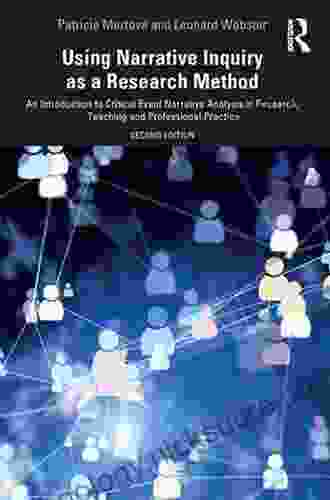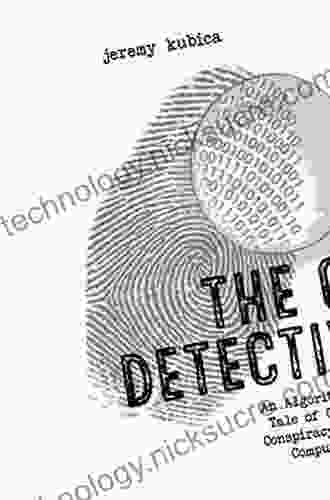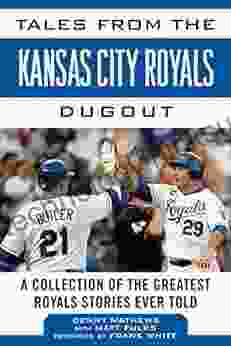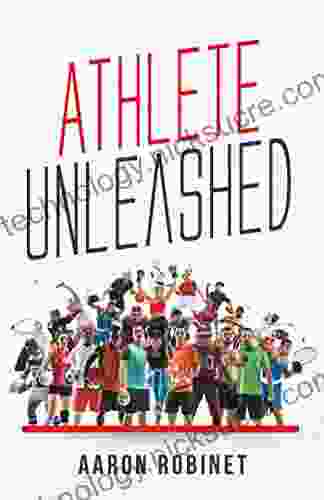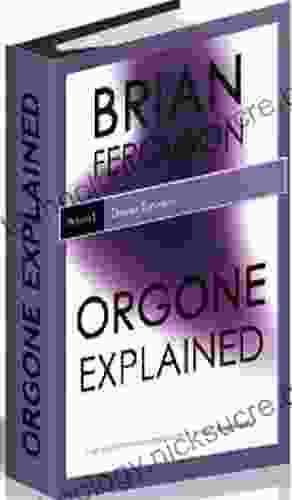An Introduction to Critical Event Narrative Analysis in Research, Teaching, and Practice

Critical event narrative analysis (CENA) is a qualitative research method that focuses on the analysis of stories or narratives about critical or significant events in people's lives. CENA is based on the assumption that stories are not simply objective accounts of what happened, but rather are constructed and interpreted by individuals in ways that reflect their values, beliefs, and experiences. As such, CENA seeks to understand not only the events themselves, but also the meanings that people make of them.
CENA has been used in a wide range of research areas, including psychology, sociology, education, and healthcare. It has been used to study topics such as trauma, resilience, social work, counseling, education, and organizational studies.
The CENA process typically involves the following steps:
4.5 out of 5
| Language | : | English |
| File size | : | 4096 KB |
| Text-to-Speech | : | Enabled |
| Screen Reader | : | Supported |
| Enhanced typesetting | : | Enabled |
| Word Wise | : | Enabled |
| Print length | : | 153 pages |
- Collection of narratives. Narratives can be collected through interviews, focus groups, or written accounts.
- Transcription and analysis of narratives. Narratives are transcribed and then analyzed using a variety of qualitative research methods.
- Identification of themes and patterns. The researcher identifies themes and patterns in the narratives that reflect the participants' experiences and meanings.
- Interpretation of findings. The researcher interprets the findings in light of existing theory and research.
CENA can be a powerful tool for research, teaching, and practice. It can help researchers to gain a deep understanding of the experiences of individuals and groups. It can also help teachers to develop more effective teaching strategies and practitioners to develop more effective interventions.
Here are some specific examples of how CENA has been used in research, teaching, and practice:
- Research: CENA has been used to study a wide range of topics, including trauma, resilience, social work, counseling, education, and organizational studies. For example, CENA has been used to study the experiences of survivors of sexual assault, the impact of poverty on children, and the effectiveness of different teaching methods.
- Teaching: CENA can be used to teach students about a variety of topics, including qualitative research methods, critical thinking, and social justice. For example, CENA can be used to teach students how to analyze stories and narratives, how to identify and challenge biases, and how to apply research findings to real-world problems.
- Practice: CENA can be used to inform practice in a variety of settings, including social work, counseling, education, and healthcare. For example, CENA can be used to help social workers develop more effective interventions for clients who have experienced trauma, to help counselors develop more effective coping mechanisms for clients who are struggling with depression, and to help teachers develop more effective teaching strategies for students who are struggling with learning.
CENA is a powerful tool that can be used to gain a deep understanding of the experiences of individuals and groups. It can be used to inform research, teaching, and practice in a variety of settings.
If you are interested in learning more about CENA, there are a number of resources available. The following books and articles provide a good to the method:
- Denzin, N. K., & Lincoln, Y. S. (2005). The Sage handbook of qualitative research. Thousand Oaks, CA: Sage.
- Riessman, C. K. (2008). Narrative analysis. Thousand Oaks, CA: Sage.
- Lieblich, A., & McLeod, J. (2008). Narrative research: Reading, analysis, and interpretation. London: Sage.
4.5 out of 5
| Language | : | English |
| File size | : | 4096 KB |
| Text-to-Speech | : | Enabled |
| Screen Reader | : | Supported |
| Enhanced typesetting | : | Enabled |
| Word Wise | : | Enabled |
| Print length | : | 153 pages |
Do you want to contribute by writing guest posts on this blog?
Please contact us and send us a resume of previous articles that you have written.
 Fiction
Fiction Non Fiction
Non Fiction Romance
Romance Mystery
Mystery Thriller
Thriller SciFi
SciFi Fantasy
Fantasy Horror
Horror Biography
Biography Selfhelp
Selfhelp Business
Business History
History Classics
Classics Poetry
Poetry Childrens
Childrens Young Adult
Young Adult Educational
Educational Cooking
Cooking Travel
Travel Lifestyle
Lifestyle Spirituality
Spirituality Health
Health Fitness
Fitness Technology
Technology Science
Science Arts
Arts Crafts
Crafts DIY
DIY Gardening
Gardening Petcare
Petcare Janja Lalich
Janja Lalich Arshay Cooper
Arshay Cooper Jon B Gould
Jon B Gould Phil Keith
Phil Keith Eric Enge
Eric Enge Taylor Harris
Taylor Harris Nancy Marie Brown
Nancy Marie Brown Graham Hancock
Graham Hancock Kathleen Mcmillan
Kathleen Mcmillan Sareen S Gropper
Sareen S Gropper John Quick
John Quick Rough Guides
Rough Guides Jennifer Cohen Harper
Jennifer Cohen Harper Duncan Butchart
Duncan Butchart Alexander Ferrauti
Alexander Ferrauti James Patterson
James Patterson Phil Jarratt
Phil Jarratt Robert Penn
Robert Penn Tracy Brown Collins
Tracy Brown Collins Aman Gupta
Aman Gupta Alicia Ranoldo
Alicia Ranoldo Kevin Bales
Kevin Bales Gail M Nelson
Gail M Nelson Marilynn Hughes
Marilynn Hughes Lonely Planet
Lonely Planet James Suzman
James Suzman Chuck Norris
Chuck Norris Alexander Jones
Alexander Jones Sabine Hossenfelder
Sabine Hossenfelder Alfie Kohn
Alfie Kohn Stephanie Ermenegild
Stephanie Ermenegild Lyn Kelley
Lyn Kelley S Kelley Harrell
S Kelley Harrell Peter Brown
Peter Brown Alda Sigmundsdottir
Alda Sigmundsdottir Philip Ball
Philip Ball Christie Cognevich
Christie Cognevich Gabriel Levy
Gabriel Levy Alexander Meyer
Alexander Meyer Elena Zotova
Elena Zotova Robert W Winters
Robert W Winters Phil Gaimon
Phil Gaimon David Thomas
David Thomas Itzhak Bentov
Itzhak Bentov Winona Guo
Winona Guo Alex Guarnaschelli
Alex Guarnaschelli Andrew Zerling
Andrew Zerling Bill Haggerty
Bill Haggerty Dipika Mukherjee
Dipika Mukherjee Hiro Ainana
Hiro Ainana Hannah V Holmes
Hannah V Holmes Alex Reinhart
Alex Reinhart Harold Klemp
Harold Klemp Sam Jalloh
Sam Jalloh Darin Ingels
Darin Ingels Suzie Sheehy
Suzie Sheehy Anna Post
Anna Post Ernest T Stringer
Ernest T Stringer Anne Dachel
Anne Dachel Darl Kuhn
Darl Kuhn Geza Vermes
Geza Vermes Alessio Mangoni
Alessio Mangoni Chris Englert
Chris Englert Martin Baldridge
Martin Baldridge Peter Ross
Peter Ross Pamela K Lamb
Pamela K Lamb Alexander Clarke
Alexander Clarke Jeana Jorgensen
Jeana Jorgensen Kalynn Bayron
Kalynn Bayron Richard Shotton
Richard Shotton Steve Helling
Steve Helling Peter Maguire
Peter Maguire Ruth Minsky Sender
Ruth Minsky Sender Suzanne Collins
Suzanne Collins Jim Hynes
Jim Hynes Albert Marrin
Albert Marrin Titania Hardie
Titania Hardie Danielle Paige
Danielle Paige Chella Man
Chella Man Alex J Gutman
Alex J Gutman Cosmic Kids Publications
Cosmic Kids Publications Julie Berry
Julie Berry Wesley Bernardini
Wesley Bernardini Genese Marie Sodikoff
Genese Marie Sodikoff Bruce Johnson
Bruce Johnson Will Hart
Will Hart Gf Denehy
Gf Denehy Alexa Whitewolf
Alexa Whitewolf G Blake Meike
G Blake Meike George Marshall
George Marshall Lake E High
Lake E High Milan Yerkovich
Milan Yerkovich Otto Kroeger
Otto Kroeger Eric R Kandel
Eric R Kandel Phil Pierce
Phil Pierce Jon Krakauer
Jon Krakauer Robert L Wolke
Robert L Wolke Alex Morgan
Alex Morgan Kortney Keisel
Kortney Keisel Patrick F Mcmanus
Patrick F Mcmanus Jennifer Kramer
Jennifer Kramer Ralph Vacchiano
Ralph Vacchiano Tetsu Kariya
Tetsu Kariya Kieran Mccarthy
Kieran Mccarthy Diana Hopkins
Diana Hopkins Eric Mason
Eric Mason Jennifer Boyle
Jennifer Boyle Elon Vidal
Elon Vidal Don Bendell
Don Bendell Paul Volponi
Paul Volponi Alejandro Portes
Alejandro Portes Olivier Doleuze
Olivier Doleuze Carla Naumburg
Carla Naumburg Alex Polyakov
Alex Polyakov Dan Purser Md
Dan Purser Md Keith H Basso
Keith H Basso Diana L Paxson
Diana L Paxson Phil Hanrahan
Phil Hanrahan Daniel Shapiro
Daniel Shapiro Pascal Boyer
Pascal Boyer Fridtjof Nansen
Fridtjof Nansen Philip Wylie
Philip Wylie Alex Bellos
Alex Bellos Dan Gookin
Dan Gookin F T Lukens
F T Lukens Anne Bogel
Anne Bogel Sabbithry Persad Mba
Sabbithry Persad Mba Alberta Hawse
Alberta Hawse Stormie Omartian
Stormie Omartian Denny Matthews
Denny Matthews Leigh Hatts
Leigh Hatts Greg Michaelson
Greg Michaelson Patrick Taylor
Patrick Taylor Kevin Mcaleer
Kevin Mcaleer Brett Cohen
Brett Cohen Danielle Tumminio Hansen
Danielle Tumminio Hansen Steve Bechtel
Steve Bechtel Alex Mars
Alex Mars Jenna Gottlieb
Jenna Gottlieb Ari Mennander
Ari Mennander Aubrey Sherman
Aubrey Sherman Thomas Sowell
Thomas Sowell Fataniss Store
Fataniss Store Sarah Lynne Bowman
Sarah Lynne Bowman Kristen Jane Anderson
Kristen Jane Anderson J C Herz
J C Herz Dennis R Helsel
Dennis R Helsel Michele Filgate
Michele Filgate Donnie Eichar
Donnie Eichar Simon Monk
Simon Monk J Richard Hackman
J Richard Hackman Derrick Niederman
Derrick Niederman Janine Marsh
Janine Marsh Alexander Mccall Smith
Alexander Mccall Smith Katherine Leigh
Katherine Leigh Nikki Nichols
Nikki Nichols Kathryn Purdie
Kathryn Purdie Conn Iggulden
Conn Iggulden Alex Hunter
Alex Hunter William R Short
William R Short Scott Kelly
Scott Kelly Mark Reed
Mark Reed Hal Higdon
Hal Higdon Robert Spindler
Robert Spindler Thomas Huhti
Thomas Huhti Michael Clary
Michael Clary R K Gupta
R K Gupta Richard M Foxx
Richard M Foxx John Kretschmer
John Kretschmer Brigid Kemmerer
Brigid Kemmerer Ben Ainslie
Ben Ainslie Howard Schor
Howard Schor Raj Kumar
Raj Kumar Gordon Rugg
Gordon Rugg Kristin Gambaccini
Kristin Gambaccini Alex Harris
Alex Harris Donald D Hoffman
Donald D Hoffman Qaiser Feroze
Qaiser Feroze Alex Light
Alex Light Charlene L Edge
Charlene L Edge Josh Bryant
Josh Bryant Michael Steven
Michael Steven Gigi Georges
Gigi Georges Roy Plotnick
Roy Plotnick Beverleigh H Piepers
Beverleigh H Piepers David Shinar
David Shinar Idan Ravin
Idan Ravin Alexander Boxer
Alexander Boxer Ellen Snortland
Ellen Snortland Michael Terry
Michael Terry River
River Jenny Mackay
Jenny Mackay Jerry C Whitaker
Jerry C Whitaker Kent David Kelly
Kent David Kelly Laura Eckert
Laura Eckert Rebecca Wilson
Rebecca Wilson Albert J Raboteau
Albert J Raboteau Joan Wulff
Joan Wulff Jennet Conant
Jennet Conant Margaret Willson
Margaret Willson Sally Huss
Sally Huss Michael Thompson
Michael Thompson Brent Zwerneman
Brent Zwerneman Patrick Alan Danaher
Patrick Alan Danaher Aleksandr Anufriyev
Aleksandr Anufriyev James Johonnot
James Johonnot Yang Erche Namu
Yang Erche Namu Alessandro Valerani
Alessandro Valerani David Borgenicht
David Borgenicht Sam Sheridan
Sam Sheridan Victoria Wilson
Victoria Wilson Gabriyell Sarom
Gabriyell Sarom Richard Ronald
Richard Ronald Alexa Nicole Cucchiara
Alexa Nicole Cucchiara Steve Flink
Steve Flink Alberto Villoldo
Alberto Villoldo Brad Borkan
Brad Borkan Jerry C Zee
Jerry C Zee Loriann Oberlin
Loriann Oberlin David N Myers
David N Myers Cecil B Hartley
Cecil B Hartley Peter Collier
Peter Collier Namita Prasad
Namita Prasad Dr Yvonne S Thornton
Dr Yvonne S Thornton Sarah Ockwell Smith
Sarah Ockwell Smith Barbara Ehrenreich
Barbara Ehrenreich Alex Pentland
Alex Pentland W C Mcrae
W C Mcrae Shannon Jett
Shannon Jett Alex Gillis
Alex Gillis Marvin Harris
Marvin Harris Chukwuma Eleodimuo
Chukwuma Eleodimuo Victoria Schwab
Victoria Schwab Alex Bezzerides
Alex Bezzerides Michael Teitelbaum
Michael Teitelbaum Alexander L Co
Alexander L Co Alex Banks
Alex Banks Marian Dewane
Marian Dewane Jennifer Estep
Jennifer Estep Martha Sears
Martha Sears Larry Pardey
Larry Pardey Brent Herrick
Brent Herrick Gordon Feinberg
Gordon Feinberg Thomas Cahill
Thomas Cahill Tiffany Dionne
Tiffany Dionne Kingsley Amis
Kingsley Amis Megan Carle
Megan Carle Terry Marsh
Terry Marsh John Stage
John Stage Kirsten Koza
Kirsten Koza Jennifer Van Allen
Jennifer Van Allen Don Pitcher
Don Pitcher Phyllis Good
Phyllis Good Richard Cole
Richard Cole Daniel Pautrat
Daniel Pautrat Mary Lynne Fernandez
Mary Lynne Fernandez Alexander Mackenzie
Alexander Mackenzie Celeste Headlee
Celeste Headlee Derek Lundy
Derek Lundy Alex Boese
Alex Boese Laura Pavlov
Laura Pavlov Stephen Wilbers
Stephen Wilbers Georgiann Davis
Georgiann Davis Earl Swift
Earl Swift Vasti Torres
Vasti Torres Jeremy Kubica
Jeremy Kubica David J Chalmers
David J Chalmers Mark Warren
Mark Warren Tony Roig
Tony Roig Jim Davidson
Jim Davidson David L Demets
David L Demets L Michele Issel
L Michele Issel Mia King
Mia King Fiaz Rafiq
Fiaz Rafiq Alex Zimmerman
Alex Zimmerman Hannah Arendt
Hannah Arendt George E Vaillant
George E Vaillant Nancy Silverton
Nancy Silverton Zach Davis
Zach Davis Aaron Robinet
Aaron Robinet Eli Burakian
Eli Burakian Robbie Couch
Robbie Couch Mark Creasy
Mark Creasy Erin Bowe
Erin Bowe Linda Egenes
Linda Egenes Glenn Rivers
Glenn Rivers Howard Carter
Howard Carter Luis Angel Echeverria
Luis Angel Echeverria Nate Orlowek
Nate Orlowek Eric Zandona
Eric Zandona Wallace Wang
Wallace Wang Alan Lightman
Alan Lightman Sarah Franklin
Sarah Franklin K D Hume
K D Hume Oluwaseun Ajayi
Oluwaseun Ajayi Dr Rebecca Harwin
Dr Rebecca Harwin Ken Schultz
Ken Schultz David N Schwartz
David N Schwartz Matthew Johnson
Matthew Johnson Gary Coleman
Gary Coleman Deirdre Martin
Deirdre Martin Audra Fordin
Audra Fordin Matt Johanson
Matt Johanson George Ehrenhaft
George Ehrenhaft Jacob Sannox
Jacob Sannox John Boyette
John Boyette Albert Hofmann
Albert Hofmann Paul Sating
Paul Sating Douglas D Scott
Douglas D Scott Meredith Atwood
Meredith Atwood Douglas Doman
Douglas Doman Margaret Rooke
Margaret Rooke Jules Wake
Jules Wake Alex Wade
Alex Wade Mauricio Fau
Mauricio Fau Paul Trammell
Paul Trammell David Farrier
David Farrier Alex Hibbert
Alex Hibbert John Thorne
John Thorne Ben Malisow
Ben Malisow Mark Golds
Mark Golds Robert Benson
Robert Benson Hadley Wickham
Hadley Wickham Richard D Easton
Richard D Easton Gary Nicol
Gary Nicol Michael Digiacomo
Michael Digiacomo Christina Riggs
Christina Riggs C C Hunter
C C Hunter Amanda Epperson
Amanda Epperson Pittacus Lore
Pittacus Lore Albert W A Schmid
Albert W A Schmid Holly Black
Holly Black Alex Itsios
Alex Itsios Brian Beffort
Brian Beffort Celia Hodent
Celia Hodent Peter J Feibelman
Peter J Feibelman Q S Khan
Q S Khan Upgraded Brain
Upgraded Brain Katie Edwards
Katie Edwards Lara S Ormiston
Lara S Ormiston Daniel L Everett
Daniel L Everett Sarah Stewart Johnson
Sarah Stewart Johnson Bertus Engelbrecht
Bertus Engelbrecht Alex Riley
Alex Riley Alfred P Rovai
Alfred P Rovai Tim Moore
Tim Moore Scott Butler
Scott Butler Amy Newmark
Amy Newmark Stanley Cohen
Stanley Cohen Sally Moomaw
Sally Moomaw Aaron Reynolds
Aaron Reynolds Leonhard Euler
Leonhard Euler Yannis Detorakis
Yannis Detorakis Alexander Bennett
Alexander Bennett Dan Jacob
Dan Jacob Jacqueline Tourville
Jacqueline Tourville Karen Casey
Karen Casey Caren Cooper
Caren Cooper Sophie David
Sophie David Todd Denault
Todd Denault Rajesh K Naz
Rajesh K Naz Jason R Rich
Jason R Rich Kinsey Phifer
Kinsey Phifer Theodore X O Connell
Theodore X O Connell Mary Ellen Hannibal
Mary Ellen Hannibal Thomas Jaden
Thomas Jaden Duncan Wells
Duncan Wells Fretta Reitzes
Fretta Reitzes Andrew Stellman
Andrew Stellman Olivia Wildenstein
Olivia Wildenstein Suzanna Mcgee
Suzanna Mcgee Laura Morton Rd
Laura Morton Rd Emma Hansen
Emma Hansen Morgan Lyle
Morgan Lyle Deborah L Davis
Deborah L Davis P J Agness
P J Agness Alexandra Bracken
Alexandra Bracken Victor Davis Hanson
Victor Davis Hanson Albert Rutherford
Albert Rutherford Ernest Hemingway
Ernest Hemingway Ashton Cartwright
Ashton Cartwright C J Brown
C J Brown Scott Fratcher
Scott Fratcher Stephen K Hayes
Stephen K Hayes Mine Dogucu
Mine Dogucu Amber Lia
Amber Lia Willard A Palmer
Willard A Palmer Teresa Denton
Teresa Denton John Burroughs
John Burroughs Katrina M Adams
Katrina M Adams Scott L Smith
Scott L Smith Stan Utley
Stan Utley L R Trovillion
L R Trovillion Evan F Moore
Evan F Moore Jase Robertson
Jase Robertson Kyle Rohrig
Kyle Rohrig Sara Shepard
Sara Shepard Rebecca Schrag Hershberg
Rebecca Schrag Hershberg Sheryl Buckland
Sheryl Buckland Chip Heath
Chip Heath Jimmy Connors
Jimmy Connors Devin Devasquez
Devin Devasquez Pekka Louhiala
Pekka Louhiala Austin Murphy
Austin Murphy Elissa Wall
Elissa Wall Stephan Martin
Stephan Martin Michael Sandler
Michael Sandler Michele Gelfand
Michele Gelfand Steve Warner
Steve Warner Game Spark
Game Spark Stephen L Sass
Stephen L Sass Peter Galison
Peter Galison Lisa Manterfield
Lisa Manterfield Catherine Crier
Catherine Crier Alex Johnson
Alex Johnson Walter Gretzky
Walter Gretzky Henrik Beyer
Henrik Beyer Aleister Crowley
Aleister Crowley Albert Ellis
Albert Ellis Cary Nemeroff
Cary Nemeroff Tim Cahill
Tim Cahill Linda White
Linda White Lynn Alley
Lynn Alley Russ Unger
Russ Unger Elizabeth White
Elizabeth White Saunders Mac Lane
Saunders Mac Lane Albert S Tarendash
Albert S Tarendash Molly Knox Ostertag
Molly Knox Ostertag Scott Whitlock
Scott Whitlock Stephon Alexander
Stephon Alexander Arieh Ben Naim
Arieh Ben Naim Julia Wertz
Julia Wertz Scott Turansky
Scott Turansky Ron Mckeefery
Ron Mckeefery Mark Sisson
Mark Sisson Roseanne A Brown
Roseanne A Brown Lisa Silverman
Lisa Silverman Kevin Gallagher
Kevin Gallagher David G Kleinbaum
David G Kleinbaum Alex J Packer
Alex J Packer Julian B Barbour
Julian B Barbour Anatoli Boukreev
Anatoli Boukreev Nate Silver
Nate Silver Alistair Moffat
Alistair Moffat Catherine Dawson
Catherine Dawson Joe Nobody
Joe Nobody Saxon Andrew
Saxon Andrew Chanice Lee
Chanice Lee Judy Dutton
Judy Dutton Robertson Tait
Robertson Tait Jeff Galloway
Jeff Galloway Pedro Domingos
Pedro Domingos Daniel Defoe
Daniel Defoe Stephen R Lawhead
Stephen R Lawhead Garth Nix
Garth Nix Travis Eliot
Travis Eliot Heather Dale
Heather Dale Vimla L Patel
Vimla L Patel Soo Kim Abboud
Soo Kim Abboud David Leadbetter
David Leadbetter Peter Matthiessen
Peter Matthiessen Bob Palmer
Bob Palmer Moh Kolli Carnet
Moh Kolli Carnet Robert Dos Remedios
Robert Dos Remedios Angelo Tropea
Angelo Tropea Rachael Ray
Rachael Ray Alex Wolf
Alex Wolf Ash Perrin
Ash Perrin Vanessa Van Edwards
Vanessa Van Edwards Janie B Butts
Janie B Butts Sky Marsen
Sky Marsen
Light bulbAdvertise smarter! Our strategic ad space ensures maximum exposure. Reserve your spot today!
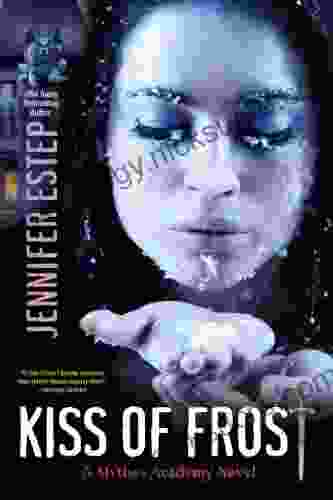
 Clay PowellUnveiling the Enchanting Realm of Kiss of Frost: A Comprehensive Guide to the...
Clay PowellUnveiling the Enchanting Realm of Kiss of Frost: A Comprehensive Guide to the...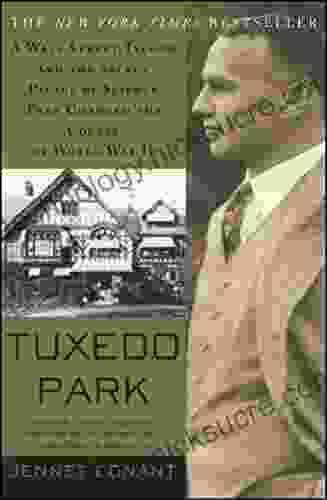
 Carson BlairWall Street Tycoon: The Secret Palace of Science That Changed the Course of...
Carson BlairWall Street Tycoon: The Secret Palace of Science That Changed the Course of... Haruki MurakamiFollow ·3.5k
Haruki MurakamiFollow ·3.5k Kurt VonnegutFollow ·13.1k
Kurt VonnegutFollow ·13.1k Aleksandr PushkinFollow ·13k
Aleksandr PushkinFollow ·13k Darren BlairFollow ·19.4k
Darren BlairFollow ·19.4k George Bernard ShawFollow ·13.9k
George Bernard ShawFollow ·13.9k Jonathan HayesFollow ·10.4k
Jonathan HayesFollow ·10.4k Daniel KnightFollow ·9k
Daniel KnightFollow ·9k David Foster WallaceFollow ·9.1k
David Foster WallaceFollow ·9.1k
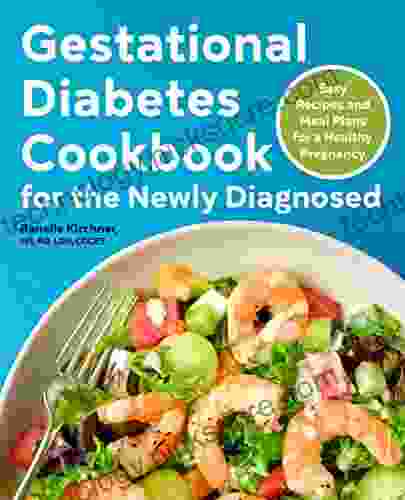
 Jeffrey Cox
Jeffrey CoxEasy Recipes And Meal Plans For Healthy Pregnancy
Congratulations on...
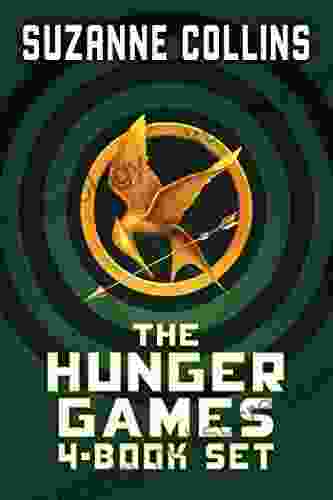
 Andy Cole
Andy ColeDive into the Fiery Ordeal and Mockingjay's Rebellion: An...
: A Captivating Dystopian Saga The...
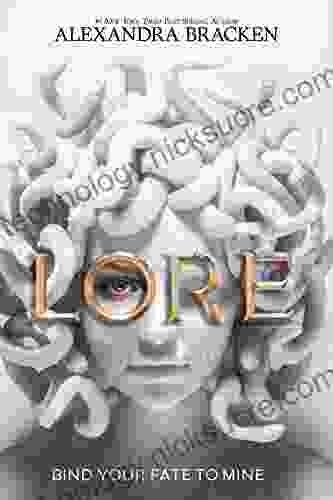
 Ernest Powell
Ernest PowellLore Alexandra Bracken: Unveiling the Mastermind Behind...
: In the vast expanse of contemporary...
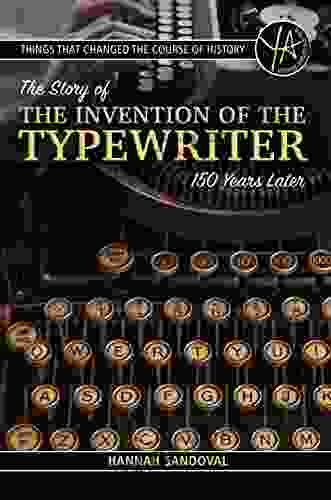
 T.S. Eliot
T.S. EliotThe Story of the Invention of the Typewriter: 150 Years...
The typewriter, a...
4.5 out of 5
| Language | : | English |
| File size | : | 4096 KB |
| Text-to-Speech | : | Enabled |
| Screen Reader | : | Supported |
| Enhanced typesetting | : | Enabled |
| Word Wise | : | Enabled |
| Print length | : | 153 pages |


